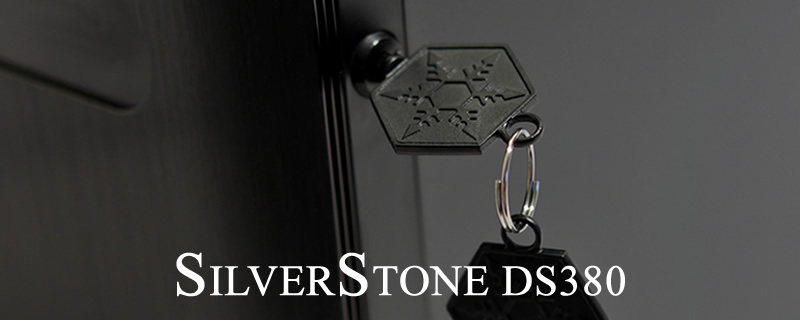SilverStone DS380 Review
Conclusion
At first view it would be very easy to think of the new DS380 from SilverStone as a simple, elegant file server, and to do so would be quite acceptable, as it is certainly able to fulfil that role with aplomb. It has all the right ingredients. eight 3.5/2.5 externally accessed hot swap bays capable of both Sata and SAS connectivity, an additional four internal 2.5″ bays, ample airflow to keep all those drives cool, a locking front door and power button and LED dim facility.  But that’s not the whole story.  If you haven’t been living in a tree you’ll have noticed that in the world of all things PC, there’s a definite drift away from the spare room or bed room and towards the living room. This drift is inexorably linked to the impact of portable hand held devices in and out of the home and the predicted imminent steam explosion bridging the gap between the home PC and large screen living room gaming.Â
So imagine for a moment that you’re living in a house with family members who over the years have amassed quite a sizable media collection. Each of them requires access as and when through the gateway of their portable device and each of them wants that storage to be secure. Now imagine that you’ve made the move from the spare room to the lounge, ditched the monster PC and decided to go down the steam route. You find yourself looking for a stylish and elegant small form factor case that won’t look out of place in the living room, perhaps with the quality touch of a brushed Aluminium door. You want it to be able to take one of the great M-ITX motherboards on the market today, perhaps coupled with a good APU or maybe a decent mid-range GPU. You need stacks of storage, decent cooling and the ability to take a small 120mm based AIO to keep that chip as cool as can be. If this is you, or you have an inkling it might be the way you see yourself going in the not too distant future then you know what, the DS380 just might be just what you’re looking for.
Previously if you wanted to go down this route you either had to sacrifice size for storage capability, or if you needed and wanted a small enclosure and had to have the extensive media storage you were looking at separate NAS storage solutions which as you can appreciate ain’t gonna work out cheap. On the other hand, the problem often encountered by products that are born out of a melding of purposes is the risk that in trying to satisfy too may requirements the end result will be a failing compromise rather than a successful hybrid, so it is with this in mind that we have critically appraised the DS380. We have to say we feel it walks the line pretty well. From a gaming PC perspective It will take a standard M-ITX board, GPUs up to 11″ long and 4.38″ wide, with room for either a basic 120mm AIO or an air cooler up to 57mm in height. Granted there are better pure SFF cases out there. Silverstone’s own RVZ01 for example, or perhaps any of the burgeoning Prodigy based chassis, but none of these are able to offer anything like the storage capacity garnered by the DS380. This single feature puts the DS380 out there on its own, not as an SFF desk top gaming PC, but as a SFF lounge PC that can provide unprecedented storage for a case its size while at the same time being able to offer low power 1080 gaming to the incumbent steam generation.Â
If we’re going to be really picky, and when aren’t we, we think that we’d like to have seen support for full size ATX PSUs as opposed to the SFX unit required by the DS380 chassis. We appreciate that the SFX PSUs can be had for just a bit more than the standard ATX units, but given that the width is available and it would have only taken a smidge more height we would have liked to have seen ATX PSU support. The upshot of course of this lack of ATX PSU support is that if you’re planning to build into this case and are hoping to cannibalise an older PC then odds are it’s PSU is going to end up somewhere gathering dust. But like we say, we’re just being picky, and suspect that in the coming months we’re going to see the number of cases requiring the use of SFX PSUs, and therefore the choices available increase steadily.Â
Thanks to Silverstone for sending in the DS380, you can discuss your thoughts in the OC3D Forums.




